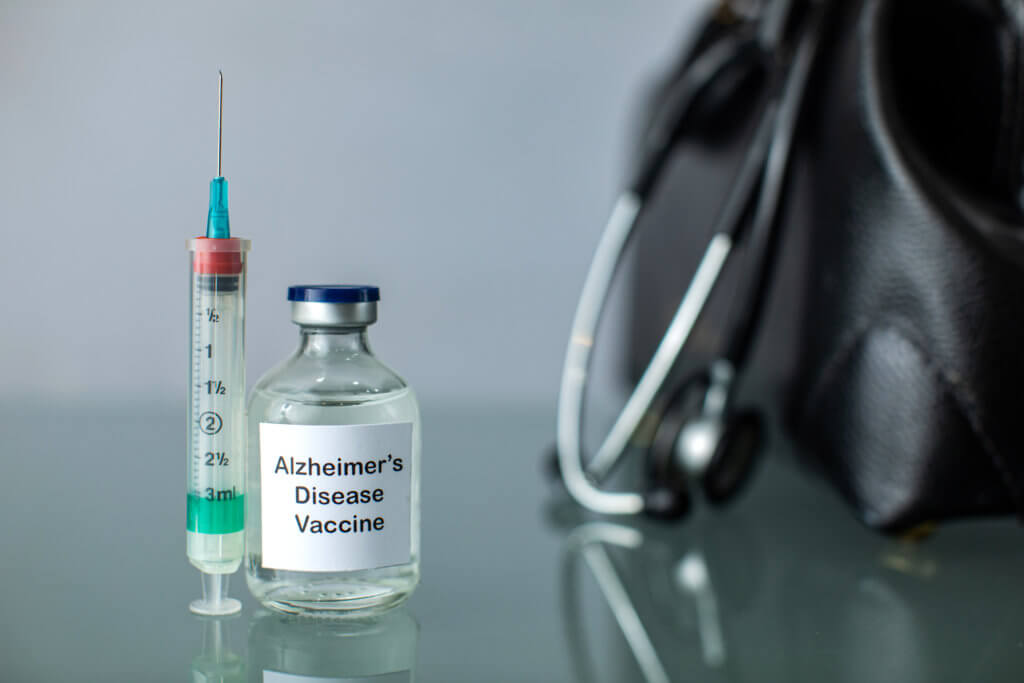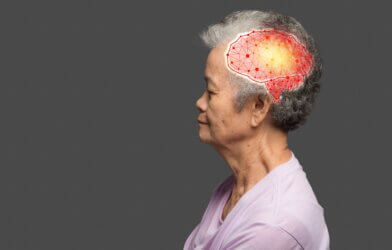A vaccine made from corn is bringing scientists one step closer to an effective cure for Alzheimer’s disease. Researchers from the University of Kansas have discovered a possible way of immunizing against dementia onset which focuses on keeping toxic protein buildups away from brain cells.
Study authors created the recombinant methionine (Met)-rich protein from corn. Scientists then oxidized this substance to produce the new antigen: methionine sulfoxide (MetO)-rich protein.
When researchers inject this antigen into the body, it provokes the immune system into producing antibodies which attack the MetO component of beta-amyloid protein. Although it’s a natural protein in the human body, beta-amyloid can build up in the brain, creating harmful blockages that disrupt our mental processes — one of the main signs of Alzheimer’s disease onset.
“As we age, we have more oxidative stress, and then beta-amyloid and other proteins accumulate and become oxidized and aggregated – these proteins are resistant to degradation or removal,” says lead researcher Jackob Moskovitz, an associate professor of pharmacology & toxicology at the KU School of Pharmacy, in a university release.
“In a previous 2011 published study, I injected mouse models of Alzheimer’s disease with a similar methionine sulfoxide-rich protein and showed about 30% reduction of amyloid plaque burden in the hippocampus, the main region where damage from Alzheimer’s disease occurs.”
Corn-based vaccine shows great promise in mice
The team tested their MetO-rich protein vaccination on mice genetically engineered to develop Alzheimer’s. Researchers found that the corn-based vaccine successfully turns the immune system on previously tolerated MetO-containing proteins, including those in beta-amyloid. The end result reduces the amount of toxic proteins which are capable of building up in the brain.
Researchers injected the MetO-rich protein into four-month-old mice who carried genes for the familial form of Alzheimer’s. Results show that the vaccine provoked their immune systems into creating MetO antibodies — lowering the chances that these mice would develop Alzheimer’s during old age (10 months-old).
“This treatment induced the production of anti-MetO antibody in blood-plasma that exhibits a significant titer up to at least 10 months of age,” the study authors add.
Mastering the maze
From there, the team compared vaccinated mice to their unvaccinated peers using a maze test that measures short-term memory.
“We measured short-term memory capability through a ‘Y’ maze, and that’s very important in Alzheimer’s disease — because when people get Alzheimer’s, their short-term memory is going away, while the old memories are still there,” Moskovitz explains.
“You put a mouse in a maze shaped like a ‘Y’ so they can go either the left or right arm. But then you introduce a third arm in the middle and if they recognize the third arm as new, they’ll spend more time exploring that new arm because they have curiosity. If they don’t even notice there’s a third arm — because they forget it the minute after they saw it — they will spend more time in right or left.”
Study authors report that the vaccinated mice displayed a 50-percent improvement in memory compared to those not taking the MetO-rich protein antigen.
In a second experiment, the mice had to locate a platform inside a water maze.
“We gave them six days to learn, and even the ones with Alzheimer’s eventually learn the location of the platform — but we found after the second day there was a big difference, the injected mice with the antigen learn much faster than the nonimmunized mice,” Moskovitz notes.
“Then we remove the platform to see if they remember where the platform was just by memory, not by looking. And again, we saw a big difference. The antigen-immunized mice remember and spend more time in the vicinity of the platform they were trained on compared to the nonimmunized control mice.”
What does all this mean for a human Alzheimer’s vaccine?
Along with short-term memory improvements, the team found that vaccinated mice displayed better a long-term memory, lower levels of beta-amyloid in their blood and the brain, and “reduced beta-amyloid burden and MetO accumulations in astrocytes in hippocampal and cortical regions.” The hippocampus is the brain region which Alzheimer’s has a destructive impact on. It plays a major role in both memory and learning.
Importantly, researchers believe their data does translate from mice to humans, making a human Alzheimer’s vaccine a very real possibility. Moskovitz believes people at high-risk for Alzheimer’s could start taking these injections later in life but before symptoms emerge.
“Around the time people are told to go get a colonoscopy for the first time in their 50s or 60s,” the researcher says. “Further booster shots could maintain immunization, a process which people are so familiar with from the COVID vaccines.”
Moskovitz notes that an active immunization would be a step up from current treatment plans for dementia, which focus on passive immunization regimes. Unlike those treatments, the methionine sulfoxide antigen pushes the body to make its own antibodies to defend against the disease.
Passive immunization strategies, which inject antibodies directly into the patient, can also have toxic side-effects like causing brain inflammation. The KU team says their next step is to conduct pre-clinical and clinical trials on humans.
The study is published in the journal Antioxidants.












